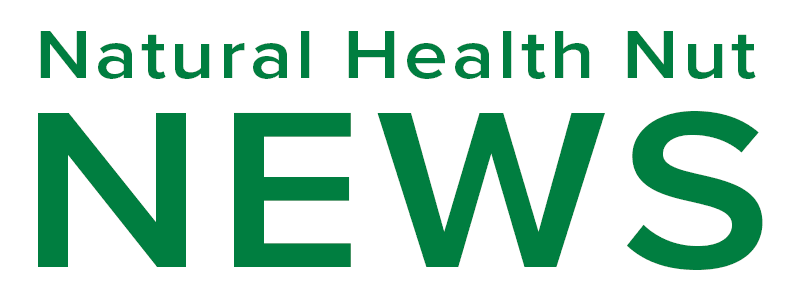Editor’s Note: This article is a reprint. It was originally published July 23, 2018.
Yams are one of the most delicious vegetables you can eat, but you may not be aware that, as a root vegetable that’s been around for eons, they also have a long history of use as an alternative medicine. Modern researchers are examining possible health benefits of wild yams that include relief from muscle cramps, rheumatoid arthritis and symptoms of menopause and diabetes prevention.
Over centuries, yams have gleaned a few other names, including China root, rheumatism root or colic root, which makes sense according to the potential aforementioned uses, but they’ve even been referred to as devil’s bones, which speculators have concluded must be because their roots are thin, long and tangled, giving them a skeletal look. The roots and rhizomes are what are typically used in natural medicine.
Many people believe differentiating the root vegetables yams and sweet potatoes is simply a matter of semantics, but the two are not even the same type of plant. Yams are part of the Dioscoreae family, which includes morning glories, while sweet potatoes belong to a genus called Convolvulaceae.
Yams, from the Senegalese word “nyami,” means “to eat.” They have only one embryonic seed leaf, while sweet potatoes have two. Wild yams, unlike sweet potatoes, are rough, scaly and usually longer, but they’re more moist and less starchy in comparison.
The outer bark of the wild yam (Dioscorea rotundata) root is high in a compound called saponin, which research shows may help lessen inflammation and balance your gut flora. Not found in sweet potatoes, saponins include dioscin, diosgenin and dioscorin, the latter of which one study, among other things, says “They exhibit antioxidant, antihypertensive, immunomodulatory, lectin activities and can protect airway epithelial cells against dust mite allergen destruction.”
Saponins have properties that combat inflammation and apparently help relax and otherwise treat a number of conditions involving your abdominal and pelvic muscles, as well as arthritic and rheumatic conditions, according to The Natural Path. In addition:
“Diosgenin was first identified in 1936 by scientists in Japan. This paved the way for the synthesis of progesterone and of such corticosteroid hormones such as cortisone. Diosgenin was also the starting point in the creation of the first contraceptive pill, despite the fact that there is no suggestion that the plant was used as a contraceptive in the past.
Over 200 million prescription drugs a year are sold that contain derivatives of this herb in them.
Wild yam is collected in the wild and cultivated throughout Mexico to supply the pharmaceutical industry with diosgenin, this substance is used to treat sex hormone problems, to produce contraceptives, menopause, premenstrual syndrome, sexual problems, high blood pressure, prostate hypertrophy, testicular deficiency, impotency, just to name a few.
From this herb the pharmaceutical industry also indirectly produces cortisones and hydrocortisones for Addison’s disease, some allergies, bursitis, contact dermatitis, psoriases, rheumatoid arthritis, sciatica and is used in the treatment of brown recluse spider bites, insect stings etc.”
Are the Compounds in Yams Health Beneficial or Not?
Traditional medicine acknowledges yams as containing compounds said to be particularly advantageous for such issues as menopause and premenstrual syndrome for women, and testicular and prostate problems in men. Diosgenin is also said to “influence” the production of several useful hormones, including estrogen and DHEA (dehydroepiandrosterone). Medical News Today
mentions several possible health benefits from eating yams, including:
-
Rheumatoid arthritis relief
-
Blood sugar regulation
-
Relief of cramps and muscular pain
The U.S. Food and Drug Administration (FDA) has yet to acknowledge any benefits connected to the safety or effectiveness of wild yams.
Multiple studies beg to differ, however:
-
The “Handbook of Herbs and Spices” identifies diosgenin as the main steroid contained in saponin that may suppress inflammation and proliferation and induce apoptosis in a variety of tumor cells.
-
Saponin was reported in a Korean study as a “promising bioactive biomolecule with diverse important medicinal properties.”
Another cited yam and its active constituent allantoin as having the potential to modulate oxidative stress, antioxidant activities and lipid profiles; improve kidney and liver function; promote the release of GLP-1; and improve the function of β-cells,
thereby maintaining insulin and glucose levels.
-
A comprehensive review involving researchers from the U.S., Vietnam, Singapore, Australia and India noted the ability of diosgenin to “prevent carcinogenesis by acting as an antioxidant and anti-inflammatory agent, and its ability to induce apoptosis of cancer cells, suggests that it can be useful as an anticarcinogenic agent.”
-
The diosgenin in yams (as well as fenugreek) was shown in another study to increase milk flow and make childbirth easier.
Diosgenin has been noted as exerting antidiabetic effects as well as hypolipidemic, hypoglycemic, antioxidant, anti-inflammatory and antiproliferative (cancer cell-inhibiting) activities.
What About the Health Benefits of Sweet Potatoes?
Apparently, food producers have given up on trying to sort out what’s a yam and what’s a sweet potato. In fact, the U.S. Department of Agriculture now requires labels on yams to also mention “sweet potatoes” to stop the confusion, even though they’re not technically the same.
As a result, unless you specifically search for yams, usually found in international markets, you’ll probably end up with sweet potatoes.
Their flavors are remarkably similar, as is, arguably, their overall appearance. Adding to the confusion, there are many varieties of sweet potatoes, but more than 600 types of yams, 95% of them grown in Africa. The outsides can be brown, red, purple, yellow or white, with flesh colors ranging from white to yellow to orange.
So are there any health benefits associated with eating sweet potatoes? Even though they’re sweet enough to be thought of as dessert in some circles, they’re still highly nutritious. High in vitamins, they’re one of the best sources of vitamin A, associated with antiaging benefits, cancer prevention and the maintenance of good eyesight,
as well as B5, B6, niacin, thiamin and riboflavin, plus carotenoids. According to Live Science:
“Sweet potatoes have more powerful nutritional benefits than yams do. Sweet potatoes and yams are both healthy foods, and they look similar. Sweet potatoes, however, have higher concentrations of most nutrients and more fiber.”
Nutrition Data compares the attributes of the two veggies and reports that boiled or baked yams
are very good sources of fiber, vitamin C, potassium and manganese, while “cooked” or baked sweet potatoes
are good sources of fiber, vitamin B6 and potassium, and a “very good” source of vitamins A and C and manganese.
It should be noted, though, that how they’re prepared impacts the nutritional potency of their vitamins and minerals. Frying them naturally compromises any health aspects, mostly due to reduced sugars, the cooking oil you use and high temperatures, which can raise the potential for acrylamide formation. The National Cancer Institute calls acrylamide a “potential human carcinogen.” It’s similar to what forms in tobacco smoke.
Nutrition Facts asserts:
“Boiling may actually retain most of the antioxidant power of sweet potatoes, compared to roasting and steaming. If we compare baking to boiling microscopically, boiling helps thin out the cell walls and gelatinize the starch, which may enhance the bioavailability of nutrients.
At the same time, the glycemic index of boiled sweet potatoes was found to be about half that of baking or roasting, so boiled sweet potatoes give us less of a blood sugar spike.
Make sure to keep the skin on, though. The peel of a sweet potato has nearly 10 times the antioxidant power as the flesh … However, the peel’s nutrition really takes a hit when baked, which wipes out over two-thirds of the antioxidants, whereas microwaving or boiling are comparatively much gentler. The same is true for the rest of the sweet potato. Baking can also cause an 80 percent drop in vitamin A levels, twice as much as boiling.”
How Yam and Sweet Potato Intake Relates to Disease Prevention
Grown for around 10,000 years, sweet potatoes are native to Central and South America, while most yams are from Africa. Still, Natural Food Benefits
notes how those and other nutrients relate to overall health benefits, to similar degrees, in both yams and sweet potatoes:
-
Heart — Vitamin B6 helps break down homocysteine, a substance that contributes to hardened blood vessels and arteries,
while high potassium levels help lower your blood pressure and regulate your heartbeat.
-
Controlling blood sugar — They’re called “sweet” potatoes, but they have a low glycemic index, meaning they release sugars into your bloodstream slowly, which also helps maintain energy; manganese helps metabolize carbs and maintain blood sugar levels.
-
Immunity and inflammation fighting — Vitamins A (orange sweet potatoes contain more) and E support a healthy immune system, and extra antioxidants come in the purple variety, due to the anthocyanin content.
-
Digestion and regularity — Fiber is plentiful in both yams and sweet potatoes, important because fiber helps maintain regularity and a healthy digestive system.
-
Stress modulating — Magnesium in sweet potatoes provide de-stressing compounds to promote relaxation and a feeling of calm, plus it supports bone, muscle, blood, artery and nerve health.
-
Skin and hair — Vitamin A also helps protect against sun damage,
and C and E offer compounds to promote collagen growth for healthy, glowing skin.
-
Cancer prevention — Orange sweet potatoes have high anticancer properties due to beta-carotenes, particularly ovarian cancer in postmenopausal women and breast cancer in premenopausal women, and the purple variety helps fight cancer cell growth.
Medical News Today
also suggests wild yam as a supplement may be “safe for most people,” but that large amounts could cause nausea, digestive issues, vomiting and headaches. Allergic reactions are also possible, it maintains, and not enough is known regarding whether young children or people who are pregnant, breast-feeding or have hormone-sensitive conditions, such as breast cancer or noncancerous uterine tumors, should use it.
Disclaimer: The entire contents of this website are based upon the opinions of Dr. Mercola, unless otherwise noted. Individual articles are based upon the opinions of the respective author, who retains copyright as marked.
The information on this website is not intended to replace a one-on-one relationship with a qualified health care professional and is not intended as medical advice. It is intended as a sharing of knowledge and information from the research and experience of Dr. Mercola and his community. Dr. Mercola encourages you to make your own health care decisions based upon your research and in partnership with a qualified health care professional. The subscription fee being requested is for access to the articles and information posted on this site, and is not being paid for any individual medical advice.
If you are pregnant, nursing, taking medication, or have a medical condition, consult your health care professional before using products based on this content.
Source: Source link
Publish Date:

